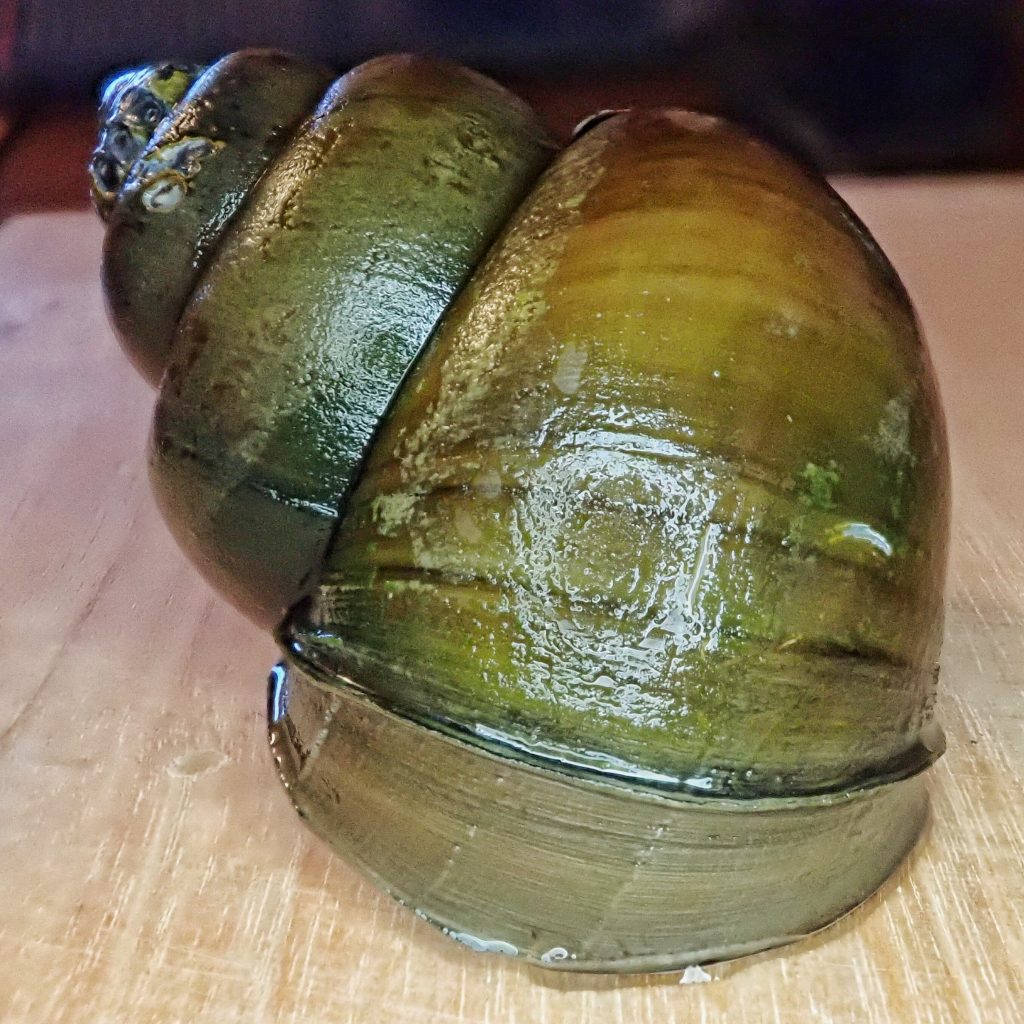
There is much taxonomic confusion and discussion about this species of aquatic snail, and the closely related Bellamya japonica, with some taxonomists saying they should be in the genus Cipangopaludina, and others thinking they are the same species. But the most current thinking I could find, backed up by genetic analysis, is that they are separate species, cipangopaludina should be a subgenus, and they belong in the genus Bellamya where they started.
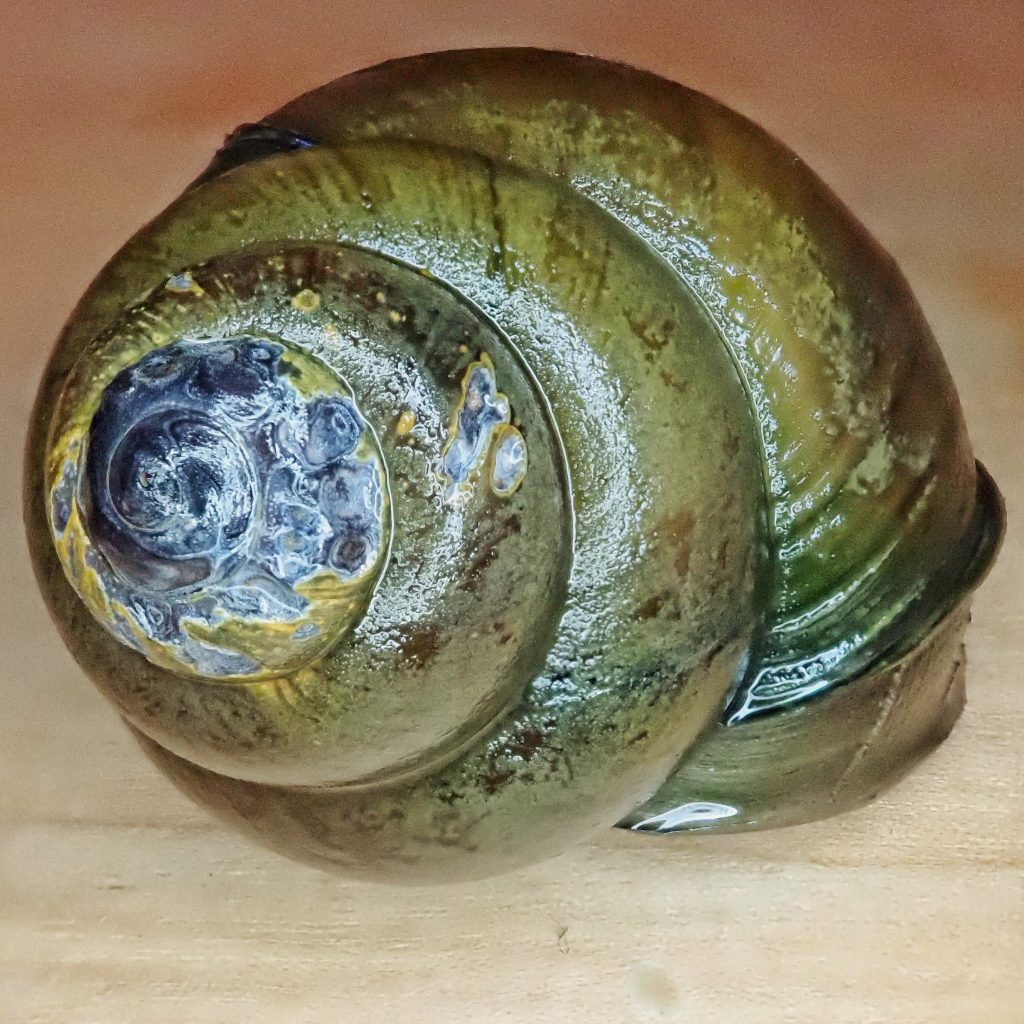
Chinese Mystery Snails were first exported to the US in 1891, and were sold as food (quantities of shells from dined upon Bellamya chinensis have been found in 10,000 year old archaeological sites in China) in Oriental markets. Other markets soon followed, and many snails were released by immigrants to provide a fresh food source. There have also been releases from aquariums (The common name mystery snails for the live young bearing family Viviparidae comes from early aquarists who were surprised by the release of young snails when there had been no egg masses). They are frequently spread to new locations on the hulls of recreational boaters. They are currently found in at least 32 states and provinces.
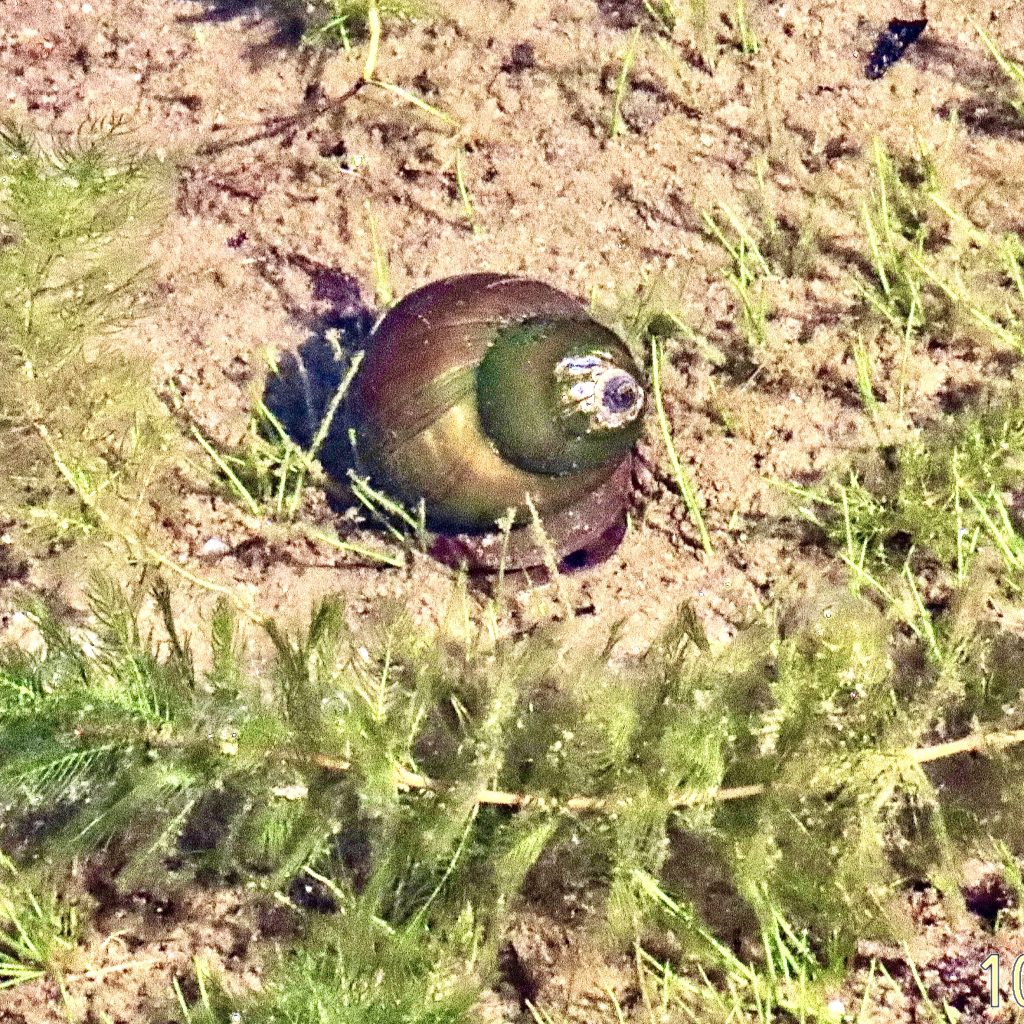
The jury is still out regarding their effect on native snail species, but there is evidence showing that they outcompete the smaller natives. They are known to be a vector for various human parasites, including intestinal flukes, but there have been no cases reported in the US that are traceable to Bellamya chinensis. They are a nuisance pest though, often clogging water intake pipes.
They are a regulated species in all of the states and provinces of our region, which means that releasing live snails into the wild is prohibited. But US Fish and Wildlife Service does not consider them to be a high impact or high priority invasive species, and I was told when I reported these to Washington State Fish and Wildlife (who confirmed my identification) that they neither trap nor monitor them, although they do maintain a database to track their spread.
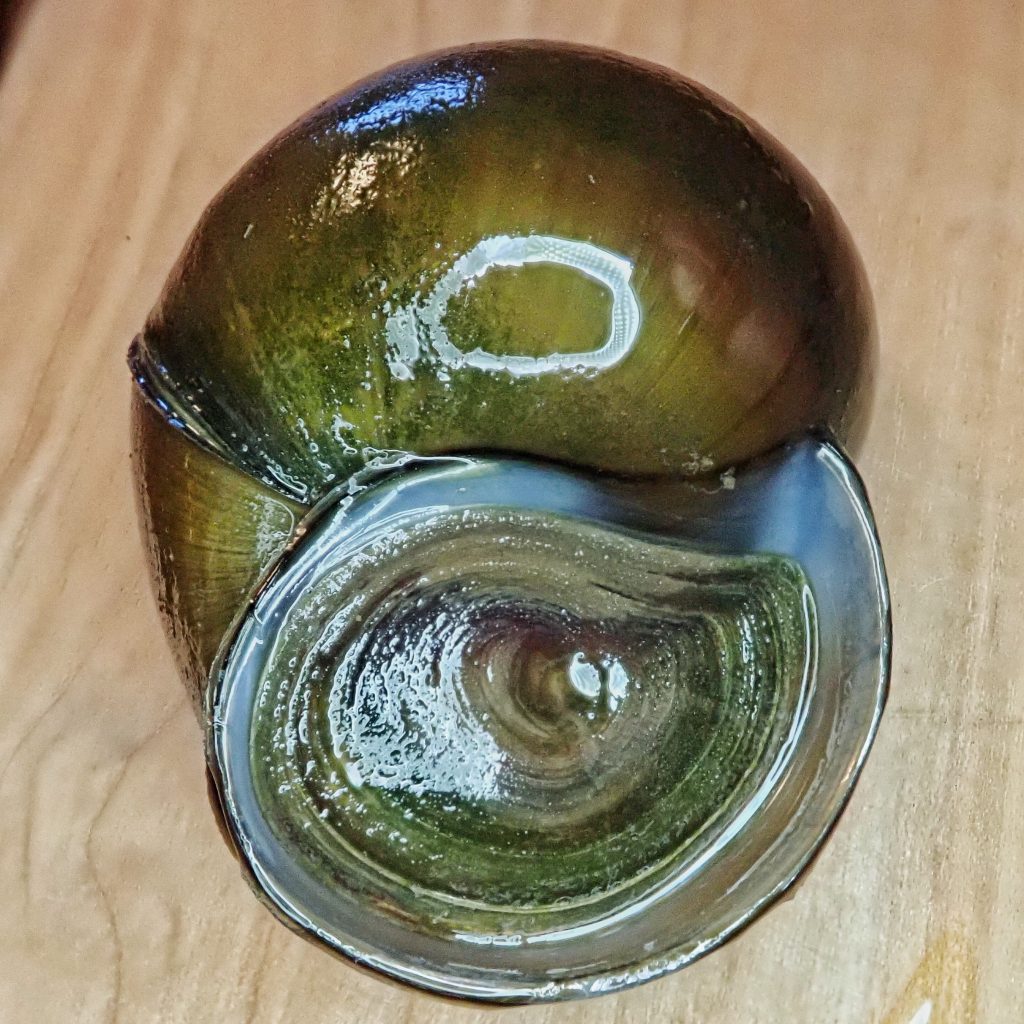
Description– Bellamya chinensis are large (the largest one I found, without even looking for big ones, measured 46mm from aperture lip to spire, and 28mm wide), solid brown (although algal deposits can give them a greenish cast) snails with a noticeably reflected (right angle bend) aperture lip, and shell whorls that narrow to an acute spire. They have an operculum, which is an aperture shaped and sized flap that seals their shell. It is attached to the top of their foot.
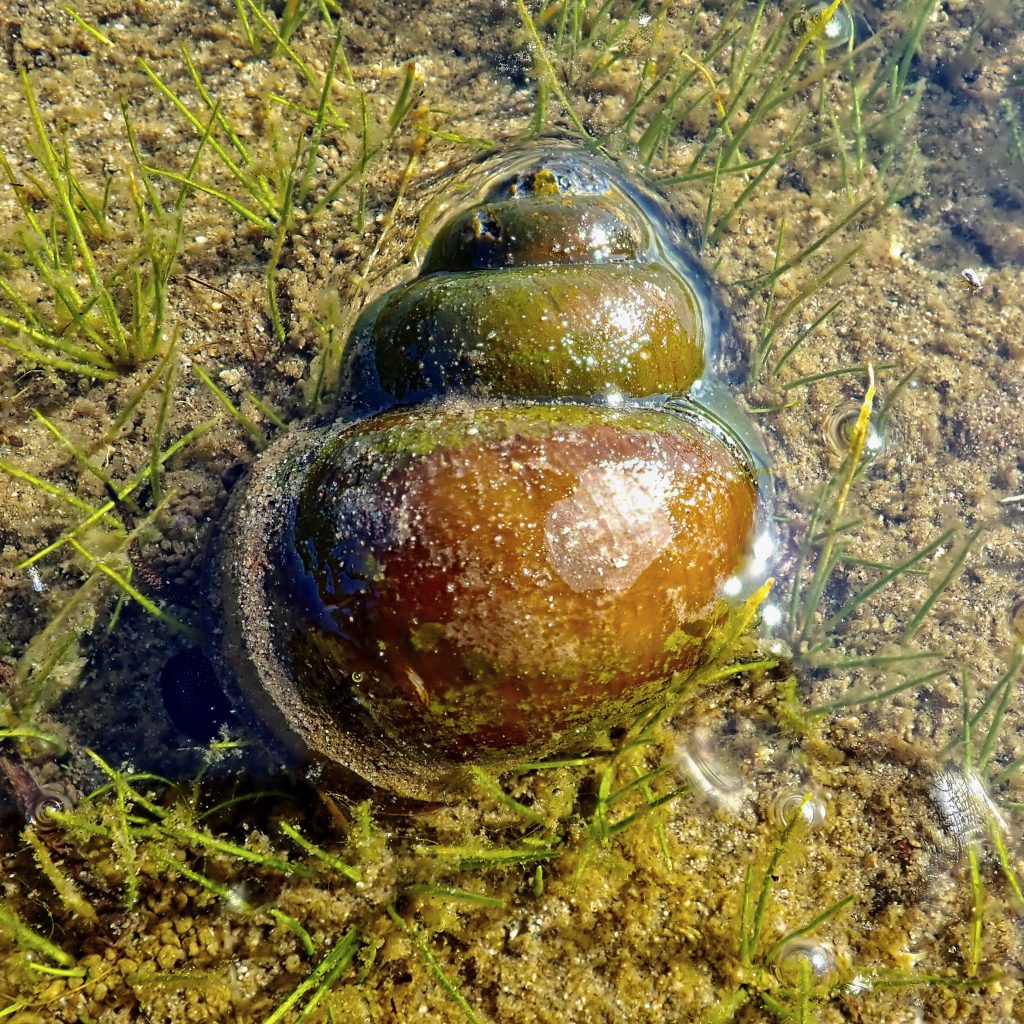
Similar species– Bellamya japonica is very similar (and still may end up being just a subspecies of B. chinensis), but the whorls narrow more acutely to the spire.
Habitat-Mud bottomed lakes, ponds, and slow moving rivers with abundant rooted aquatic vegetation. Has a high tolerance for pollution (in fact they are often introduced to rice paddies because of their filtering out of heavy metals and other pollutants), and has been found in brackish water. They are aquatic obligates and cannot breathe air.
Range– Native to Asia. Sporadic in our region.
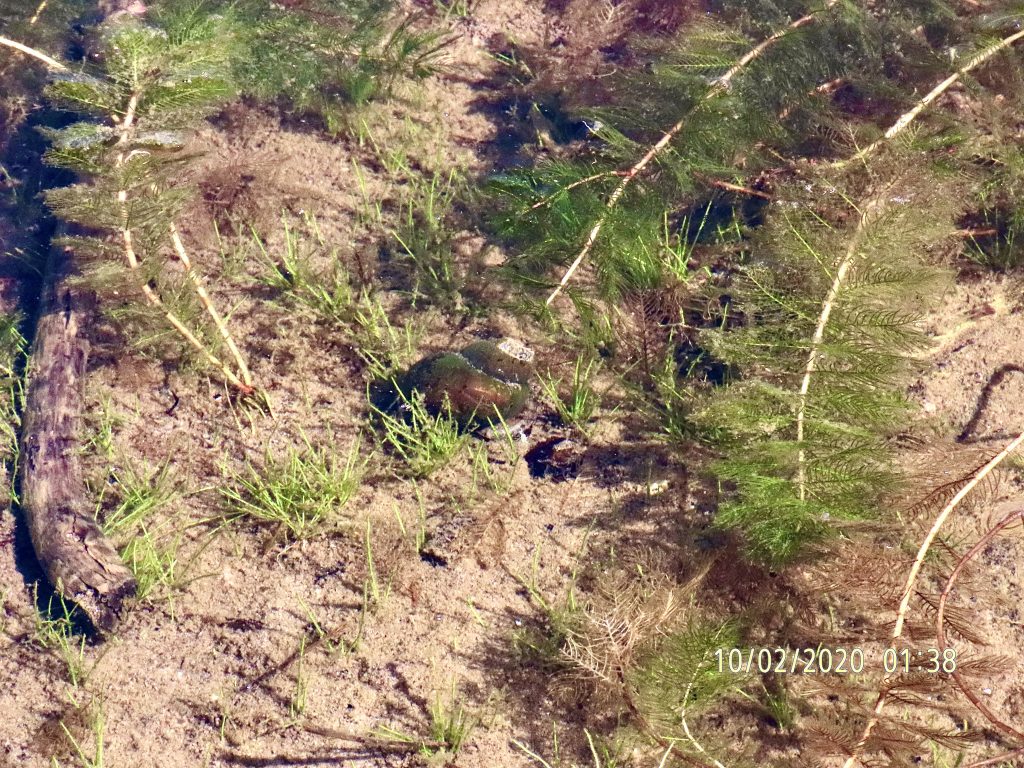
Eats– They are filter feeders and detrivores who strain nutrients from the water. They will also browse micro algae and feed on carrion.
Eaten by– Crayfish are known to prey on this species. There are anecdotal reports from Asia of crows grabbing them in shallow water and dropping them from a height to break the shell so they can feed on them, although to me the shell doesn’t seem heavy enough to require anything more than pecking to shatter it. I found mounds of cracked and empty shell on the shoreline of Kress Lake that were surrounded by raccoon tracks. Turtles, fish, and waterfowl consume young snails.
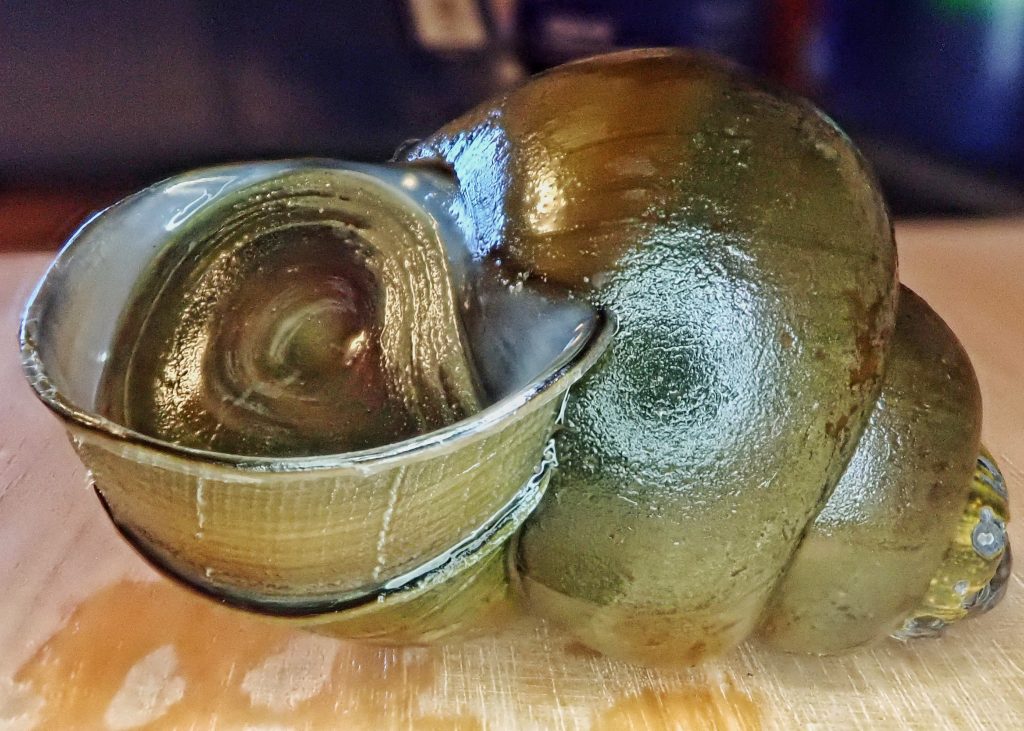
Adults active– Year around. However they are only found in the shallows during breeding, which begins after their first year. After breeding they seek deeper water. Bellamya chinensis can live for up to 5 years.
Etymology of names– I can not ascertain for sure who Jousseaume meant to honor with the Bellamy of Bellamya, but possibly it was John Cremer Bellamy, author of ‘The Natural History of South Devon’ (1839), and original describer of the snail species Helix subvirescens. The species epithet chinensis references this species’ native land. The subgenus Cipangopaludina comes from ‘cipango’, a very old name for Japan (though originally the name of a mythic island in the China Sea, Marco Polo gave this name to Japan), and ‘paludina’ which means marsh dweller and was the first name given to the Viviparid (which means ‘live bearing’) snails.
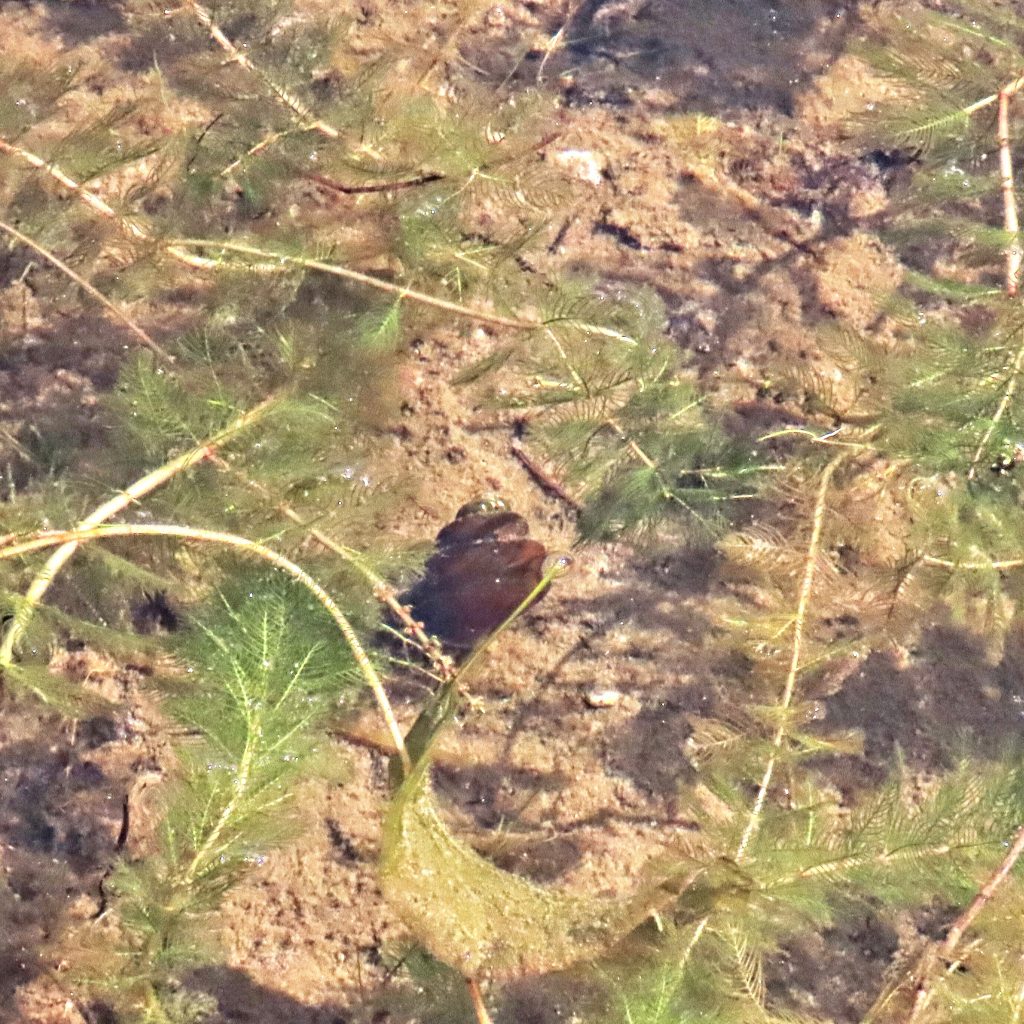
https://www.fws.gov/fisheries/ANS/erss/highrisk/ERSS-Cipangopaludina-chinensis-FINAL-March2018.pdf
http://www.iucngisd.org/gisd/species.php?sc=1812
https://invasions.si.edu/nemesis/browseDB/SpeciesSummary.jsp?TSN=70329
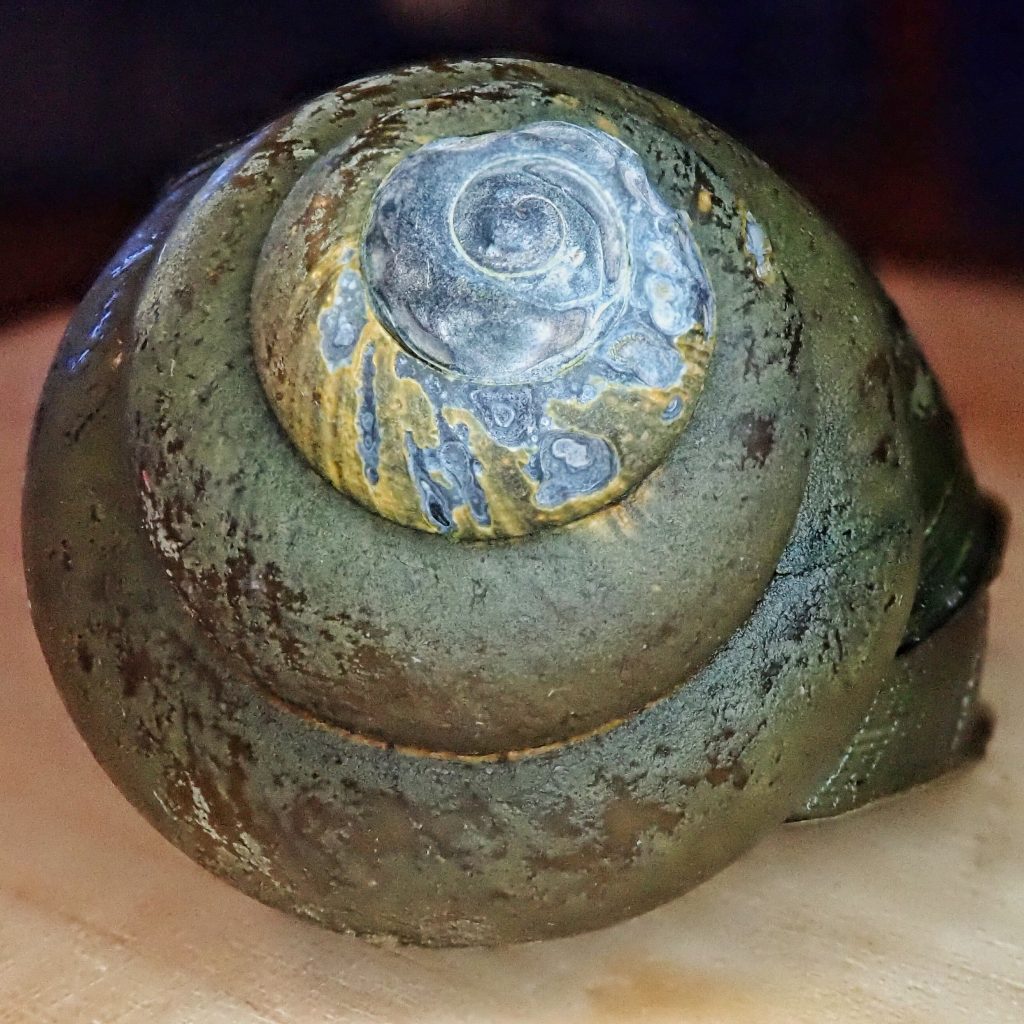
Fascinating g. Beautiful pictures